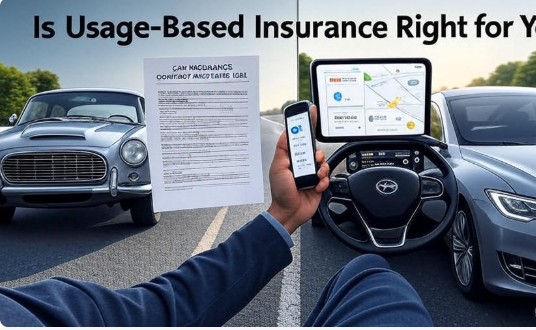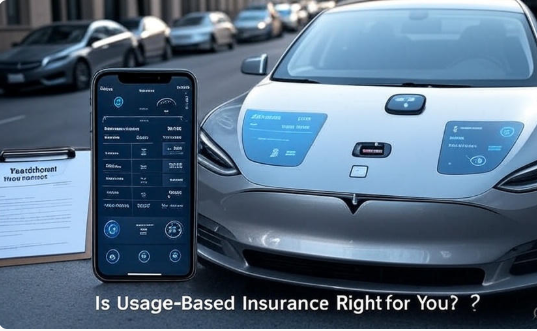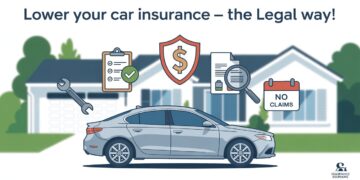In recent years, car insurance has undergone a digital transformation. One of the most innovative developments is usage-based insurance (UBI). While traditional auto insurance primarily evaluates risk based on static factors like age, gender, location, and credit history, usage-based insurance adds a dynamic layer—how you actually drive. As telematics technology becomes more advanced and widespread, more drivers are asking the central question: Is usage-based insurance right for you?
This article aims to help you make an informed decision by explaining what UBI is, how it works, its benefits and drawbacks, and who it is most suitable for. We’ll also explore leading providers, frequently asked questions, and practical considerations before enrolling in a UBI program.
What Is Usage-Based Insurance?
Usage-based insurance is a type of auto insurance where the premium is calculated based on actual driving behavior. Instead of solely relying on demographic information, insurers gather data through telematics devices or mobile apps that monitor your driving habits.
Types of Usage-Based Insurance
There are two main types of usage-based insurance:
1. Pay-How-You-Drive (PHYD)
This model considers how safely you drive. It evaluates factors like:
- Speeding
- Hard braking
- Rapid acceleration
- Cornering behavior
- Phone usage while driving
- Time of day (e.g., night driving vs. daytime)
2. Pay-As-You-Drive (PAYD)
Also known as mileage-based insurance, this model calculates premiums based on how many miles you drive. It doesn’t focus on driving behavior but rather the volume of driving.
Some insurers offer hybrid models combining both methods to assess risk more accurately.
How Does Usage-Based Insurance Work?
When you enroll in a UBI program, your insurer will either:
- Ask you to install a telematics device (usually a plug-in dongle in the OBD-II port of your vehicle)
- Instruct you to download a smartphone app that uses GPS and motion sensors
These tools collect driving data and transmit it to your insurance company. Based on the insights, your insurer will adjust your premium at regular intervals—usually at renewal time.
Data Collected in UBI Programs
- Total mileage
- Time of trips (day vs. night)
- Locations visited
- Acceleration patterns
- Braking behavior
- Speed consistency
- Phone activity while driving
Pros of Usage-Based Insurance
1. Potential Cost Savings
Safe drivers can enjoy discounts ranging from 10% to 40% depending on the insurer and driving record.
2. Personalized Premiums
Your insurance rate is tailored to your actual driving habits, which may be more accurate and fair than relying solely on demographics.
3. Improved Driving Habits
Being monitored can motivate drivers to improve their behaviors. Many drivers report being more cautious after enrolling in UBI programs.
4. Accident Analysis and Claims
Telematics data can provide critical evidence in the event of a crash, helping resolve claims more efficiently.
5. Ideal for Low-Mileage Drivers
If you drive infrequently, a PAYD model could significantly lower your premium.
Cons of Usage-Based Insurance
1. Privacy Concerns
UBI programs collect sensitive information, including GPS data and driving behaviors. Some drivers are uncomfortable with this level of monitoring.
2. Potential Rate Increases
Not all UBI programs guarantee only discounts. If your driving is deemed risky, your premium could increase.
3. Technical Limitations
Smartphone apps can misattribute driving behavior to passengers, and telematics devices may not always function accurately.
4. Limited Availability
Some states or provinces restrict the use of certain data types. Additionally, not all insurers offer UBI nationwide or in rural areas.
5. Data Ownership Ambiguities
It may not always be clear who owns or controls your data, or how long it is stored. This could be a concern in case of disputes or if you wish to opt out.
Is Usage-Based Insurance Right for You?
When UBI Might Be a Good Fit
- You’re a cautious and safe driver
- You drive less than 10,000 miles per year
- You mostly drive during the day
- You want personalized rates
- You’re comfortable with telematics and data sharing
- You’re a parent monitoring a teen driver
When UBI Might Not Be Ideal
- You regularly drive late at night
- You have a long daily commute or drive for work
- Your driving includes frequent hard braking or urban traffic
- You’re concerned about GPS tracking and data privacy
- Your vehicle is shared among multiple drivers
Leading Usage-Based Insurance Providers
Here are some popular UBI programs offered by top insurers:
Provider |
Program Name |
Discount Potential |
Device Type |
|---|---|---|---|
Progressive |
Snapshot |
Up to 30% |
App or Plug-in |
State Farm |
Drive Safe & Save |
Up to 30% |
App |
Allstate |
Drivewise |
Up to 40% |
App |
Nationwide |
SmartRide |
Up to 40% |
Plug-in or App |
Liberty Mutual |
RightTrack |
5%–30% |
Plug-in or App |
Always check with providers directly to confirm current discount rates and eligibility requirements in your region.
Real-World Scenarios
Scenario 1: The Commuter
Alex commutes 40 miles a day and drives during peak traffic. Despite being a careful driver, the frequent stop-and-go traffic leads to harsh braking scores. UBI may not benefit Alex much.
Scenario 2: The Retired Driver
Maria drives under 5,000 miles a year and avoids night driving. A mileage-based UBI model could cut her premium significantly.
Scenario 3: The Teen Driver
Lisa just got her license, and her parents want to monitor her driving. UBI provides both a safety check and potential discounts.
Scenario 4: The Privacy Advocate
Tom drives safely but is uncomfortable sharing location and behavioral data. Traditional insurance might be more suitable for him.
Frequently Asked Questions (FAQs)
Can usage-based insurance increase my premium?
Yes. Some programs may raise your rates if risky driving behavior is detected. Read the fine print before enrolling.
Is UBI mandatory?
No. It’s typically optional, though some insurers may offer lower base rates with a UBI program as part of the policy.
What happens if someone else drives my car?
If the telematics device or app is active, their behavior may impact your score. Some programs let you tag trips or identify drivers.
Can I opt out of the program?
Most insurers allow you to leave the program, but this may reset your discount and revert you to standard rates.
Is my data safe?
Insurers claim to use encrypted channels and store data securely, but breaches are still possible. Review each provider’s privacy policy carefully.
Will participating affect my credit score?
No. Usage-based insurance does not impact your credit rating.
Legal and Regulatory Considerations
State and Provincial Regulations
Some jurisdictions restrict what data insurers can use or require disclosure of how data is analyzed. Be sure to understand local laws governing UBI.
Transparency Requirements
New regulations may soon require insurers to disclose algorithms or rating models used in UBI. This could improve fairness and oversight.
Tips Before You Enroll
1. Read the Fine Print
Understand how your data will be used, stored, and how it affects your premium.
2. Ask About Trial Periods
Some insurers offer a trial or evaluation period during which your driving is assessed without impacting your premium.
3. Monitor Your Scores
Many apps allow you to view your driving data in real time. Use this feedback to adjust habits and improve scores.
4. Consider Device Compatibility
Ensure your car supports the telematics device or that your smartphone is compatible with the insurer’s app.
5. Evaluate the Trade-Off
Weigh potential savings against privacy concerns. If you’re uncomfortable with sharing personal data, UBI might not be the best option.
Conclusion
Usage-based insurance represents a significant shift in how auto premiums are calculated. By leveraging real-time data and telematics, UBI aims to offer more personalized, fairer pricing. However, it also introduces new challenges related to privacy, data security, and potential rate variability.
So, is usage-based insurance right for you? That answer depends on your driving habits, comfort with technology, and openness to data sharing. For some, it presents an opportunity to save significantly while encouraging safer driving. For others, the trade-offs may outweigh the benefits. By understanding how UBI works and evaluating your personal circumstances, you can make a well-informed choice that aligns with your financial and ethical priorities.
Ultimately, the key is to remain informed, compare offerings, and choose the coverage model that best fits your lifestyle.












